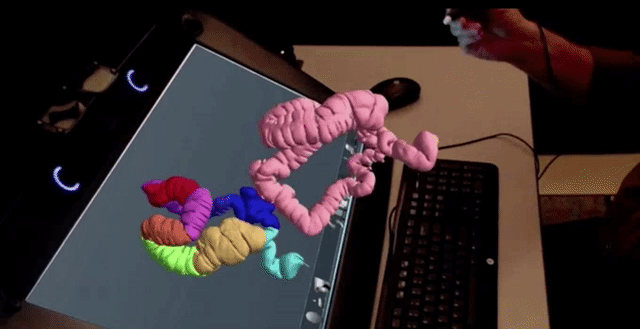
With all the new technology around, why do physicians keep looking at medical images in 2D? The human body has three dimensions, and even the most seasoned observer can (and will) miss an important detail that could represent the difference between life or death for a patient. Trusting in technology will help reduce the risks and bring the results that we have always have strived for: to practice better medicine. Day after day, new technologies arise for this purpose, and every day these technologies are getting more and more accessible for everyone.

Nearly every medical emergency, operating room, or consultation assesses medical images in 2D format, and it has worked – until now. But, should we skip innovation? No, we shouldn’t. Having said this, we want to introduce you to a company that is working to bring innovation to everyone: Echopixel Inc. Echopixel is a company that was founded in 2011, and they are based in Los Altos Hills, California. Echopixel is developing technology in search of achieving ‘a new world of patient care’ through an interesting project called True 3D Viewer. True 3D Viewer is a very simple system that allows users to appreciate medical images in 3D. Seems like a very simple task, right? Well, it’s more complex in the practice, but, we will skip the technical data.

The True 3D Viewer is a very interesting piece of hardware. It consists of a monitor, a stylus, and a pair of glasses. The images are obtained through traditional methods (CT Scan, MRI), and then this data is fed into the system. The monitor has four cameras that track the user’s head movements, in thus, making a circuit between the monitor, glasses and stylus to provide 3D images with free interaction to the user in real time. This gives the user important advantages, such as giving the capability of not being restricted by the more usual ‘sagittal’, ‘coronal’ or ‘axial’ perspectives. With True 3D Viewer, you can manipulate the data as you please while facilitating measurement of each and every structure in the image and allowing the user to ‘dissect’ each region as they see fit in order to acquire a better perception of the area they need to study. To see the True 3D Viewer in action, check out the video below:
It’s amazing, and even though it’s technical specifications are really complex, it’s very simple to use. We can picture it being used in every context where medical imaging needs to be seen, such as in a medical office, an operating room, or even in an emergency room. It’s not specified if there can be more than one user for the True 3D Viewer glasses, but we believe it isn’t impossible. Another interesting feature of this device is the capability to share specific findings with other users which, in theory, paves the way for a telemedicine and telementoring platform in the near future – which is a truly incredible feature!

At ARinMed, we continue to be amazed by so many different devices and platforms that emerge through the concept of Augmented and Mixed Reality, and this is an important device in a technical and style-oriented way, especially considering that there are many aspects of AR that can be considered negative by some users, specifically in the surgical field, (such as the weight of the AR glasses, which doesn’t seem to be a problem with this system). However, there is a matter of taste; but, the most important aspect is that we are getting closer to reach a point where there will be a device for everyone that wants to embrace Augmented Reality in Medicine.
What do you think about True 3D Viewer? Please let us know your thoughts in the comments section!








